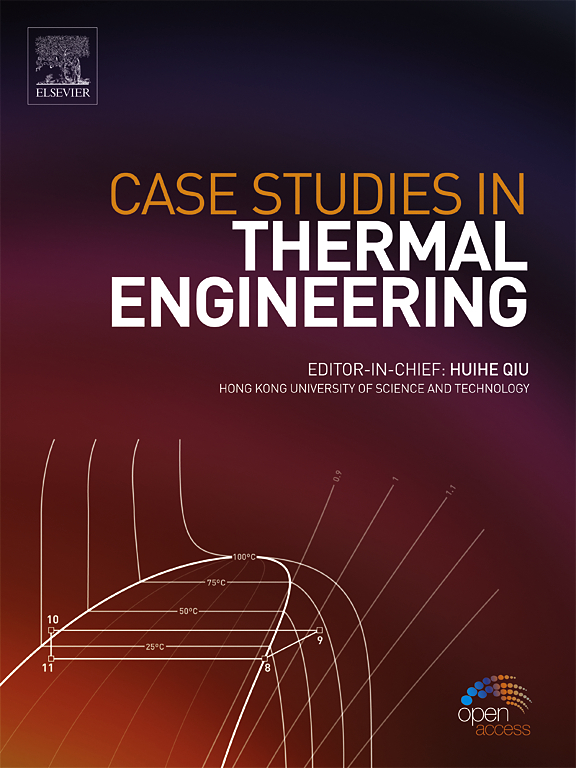Transient behavior of ablation and swelling for C/C composite and HfC-coated C/C composite in an arc-heated wind tunnel
IF 6.4
2区 工程技术
Q1 THERMODYNAMICS
引用次数: 0
Abstract
This study investigated and modeled the transient behavior of surface recession, defined as the difference between ablative length and swelling length, for thermal protection materials within a high-enthalpy flow. Needle punch carbon-carbon (NPCC) and hafnium carbide coated carbon-carbon (HfC-coated NPCC) were exposed to high-enthalpy flow with a heat flux of 7.67 MW/m2 generated by an arc-heated facility. The NPCC and the HfC-coated NPCC represent an ablative surface and a non-ablative surface, respectively. Surface recession histories were estimated through an image analysis and visualizations monitored by a high-speed camera. Moreover, measured data including surface temperature histories, mass loss, and total length were presented. We proposed the models for the transient recession on the ablative surface and the non-ablative surface considering the ablation and the swelling. The ablative length was calculated using non-dimensional parameter B′, which computes ablation rates under equilibrium air conditions. While B’ modeling accurately predicted the ablation rates, it could not reflect the swelling phenomenon during an initial heating phase. The swelling was modeled with consideration of the thermal expansion. Specifically, the effect of increased porosity near the ablative surface was incorporated into the thermal expansion coefficient. The model developed in this study well agreed with the experimental data.
电弧加热风洞中 C/C 复合材料和 HfC 涂层 C/C 复合材料的烧蚀和膨胀瞬态行为
本研究对高焓流中热保护材料的表面后退(定义为烧蚀长度与膨胀长度之差)的瞬态行为进行了研究和建模。针刺碳碳(NPCC)和碳化铪涂层碳碳(HfC 涂层 NPCC)暴露在电弧加热设施产生的 7.67 MW/m2 热通量的高焓流中。NPCC 和 HfC 涂层 NPCC 分别代表烧蚀表面和非烧蚀表面。表面衰退历史是通过高速摄像机监控的图像分析和可视化来估算的。此外,还提供了包括表面温度历史、质量损失和总长度在内的测量数据。考虑到烧蚀和膨胀,我们提出了烧蚀表面和非烧蚀表面的瞬时衰退模型。烧蚀长度是通过计算平衡空气条件下的烧蚀率的非尺寸参数 B′计算得出的。虽然 B′模型能准确预测烧蚀率,但不能反映初始加热阶段的膨胀现象。在建立膨胀模型时考虑了热膨胀。具体来说,烧蚀表面附近孔隙率增加的影响被纳入了热膨胀系数。该研究建立的模型与实验数据十分吻合。
本文章由计算机程序翻译,如有差异,请以英文原文为准。
求助全文
约1分钟内获得全文
求助全文
来源期刊

Case Studies in Thermal Engineering
Chemical Engineering-Fluid Flow and Transfer Processes
CiteScore
8.60
自引率
11.80%
发文量
812
审稿时长
76 days
期刊介绍:
Case Studies in Thermal Engineering provides a forum for the rapid publication of short, structured Case Studies in Thermal Engineering and related Short Communications. It provides an essential compendium of case studies for researchers and practitioners in the field of thermal engineering and others who are interested in aspects of thermal engineering cases that could affect other engineering processes. The journal not only publishes new and novel case studies, but also provides a forum for the publication of high quality descriptions of classic thermal engineering problems. The scope of the journal includes case studies of thermal engineering problems in components, devices and systems using existing experimental and numerical techniques in the areas of mechanical, aerospace, chemical, medical, thermal management for electronics, heat exchangers, regeneration, solar thermal energy, thermal storage, building energy conservation, and power generation. Case studies of thermal problems in other areas will also be considered.
 求助内容:
求助内容: 应助结果提醒方式:
应助结果提醒方式:


